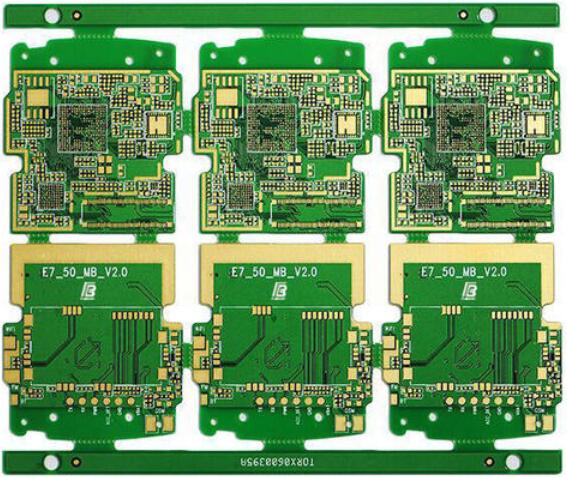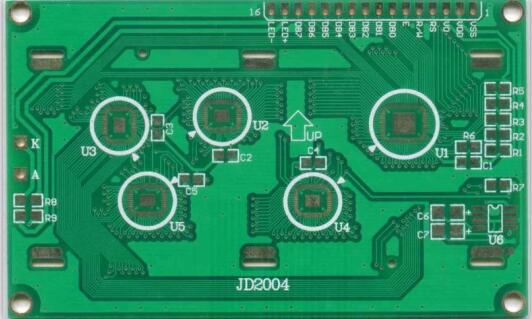hdi PCB board introduction
HDI board (High Density Interconnector), namely high-density interconnection board, is a PCB board with a relatively high line distribution density using micro-blind and buried via technology. The HDI board has an inner layer circuit and an outer layer circuit, and then uses processes such as drilling and metallization in the hole to realize the internal connection of each layer of the circuit.

HDI boards are generally manufactured by layer-by-layer method, the more the number of layers, the higher the technical grade of the plate. Ordinary HDI boards are basically one-time build-up. High-end HDIvuses two or more build-up techniques, while using advanced PCB technologies such as stacking holes, electroplating and filling holes, and laser direct drilling.
When the density of the PCB increases beyond the eight-layer board, it is manufactured with HDI, and its cost will be lower than that of the traditional and complex lamination process. HDI board is conducive to the use of advanced packaging technology, and its electrical performance and signal accuracy are higher than traditional PCBs. In addition, HDI boards have better improvements to radio frequency interference, electromagnetic wave interference, electrostatic discharge, and heat conduction.
Are PCB boards with blind and buried holes called HDI boards? HDI boards are high-density interconnect circuit boards. The boards that are plated with blind holes and then laminated are all HDI boards, which are divided into first-order, second-order, third-order, and fourth-order. For fifth-order HDI, a simple buried hole is not necessarily HDI.
How to distinguish HDI
The first-order is relatively simple, and the process and craftsmanship are well controlled.
The second order started to be troublesome, one was the alignment problem, and the other was the problem of punching and copper plating. There are many types of second-order designs. One is that the positions of each step are staggered. When connecting the next adjacent layer, it is connected in the middle layer through a wire, which is equivalent to two first-order HDIs.
The second is that the two first-order holes overlap, and the second-order is realized by superimposing. The processing is similar to two first-orders, but there are many process points to be specially controlled, which is mentioned above.
The third type is to punch directly from the outer layer to the third layer (or N-2 layer). The process is different from the previous one, and the difficulty of punching is also greater.
is the second-order analogy for the third-order.
PCB board ink introduction
Printed circuit board ink is also called (PCB ink), which refers to the exclusive ink used in the printed circuit board, which has its special physical properties, such as the viscosity, thixotropy and fineness of the ink. Knowing these physical properties can improve the ability to use ink. When in use, the best printing effect can be achieved.

In the process of printed circuit board, in order to obtain the fidelity of image reproduction, the ink must have good viscosity and suitable thixotropy. So what is viscosity? It is the internal friction of the liquid. Under the action of external force, one layer of liquid can slide on another layer of liquid, and the friction force exerted by the inner layer of liquid. This should specifically point out that temperature has a significant effect on viscosity.
For example: thick liquid inner layer sliding encounters greater mechanical resistance, and thinner liquid has lower resistance. What is thixotropy? Thixotropy is actually a physical property of liquids. The viscosity will decrease under agitation, and it will quickly recover its original viscosity characteristics after standing still. Through stirring, the effect of thixotropy lasts for a long time, enough to rebuild its internal structure. To achieve high-quality screen printing effects, the thixotropy of the ink is very important.
Especially in the squeegee process, the ink is agitated to make it liquefied. This effect accelerates the speed of ink passing through the mesh, and promotes the uniform connection of the ink separated by the mesh. Once the squeegee stops moving, the ink returns to a static state, and its viscosity quickly returns to the original required data. Therefore, in the case of manual operation, the technical experience of the technicians is very demanding, so that in the process of pushing and pulling, the uniformity of the ink will be very good. If it is a mechanical operation, it will be simpler.
The second is fineness: pigments and mineral fillers are generally solid, and after fine grinding, their particle size does not exceed 4/5 microns. This value is relatively accurate and forms a homogeneous fluid state in a solid form. The solder mask color printed in this way looks very full and uniform.
Precautions for ink use
First
Temperature requirements, in any case, the temperature of the ink must be kept below 20-25°C, and the temperature cannot change too much, otherwise it will affect the viscosity of the ink and the quality and effect of the screen printing. Especially when the ink is stored outdoors or at different temperatures, it must be placed in the ambient temperature for a few days before use or the ink tank can reach a proper operating temperature.
This is because the use of cold ink will cause screen printing failures and cause unnecessary trouble. Therefore, in order to maintain the quality of the ink, it is best to store or store in the process conditions at room temperature.
second
The ink must be fully and carefully mixed manually or mechanically before use. If air enters into the ink, let it stand for a period of time when using it. If you need to dilute, you must first mix it thoroughly, and then check its viscosity. The ink tank must be sealed immediately after use. At the same time, never put the ink on the screen back into the ink tank and mix with the unused ink.
third
must be equipped with a special cleaning agent to clean the ink, and it must be very thorough and clean. No matter what color the ink is, it must be cleaned once. It is best to use a clean solvent, so that it will not affect the use of other colors of ink.
fourth
When the ink is dried, it must be carried out in a device with a good exhaust system, so as to ensure that the quality of the ink will not change significantly.
Generally speaking, in the actual printing process, it is necessary to operate the standard, and maintain the operating conditions to perform the screen printing operation at the operating site that meets the technical requirements of the process.